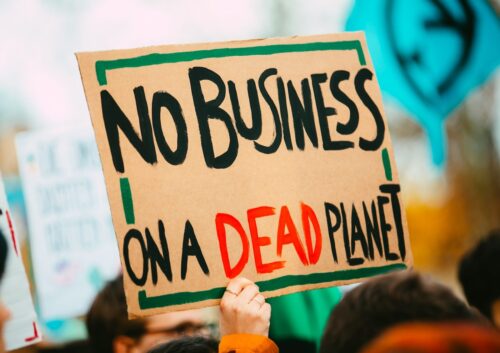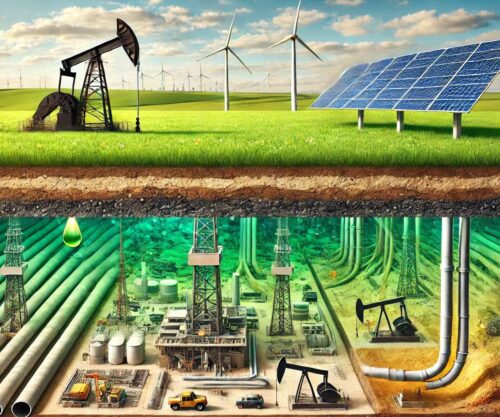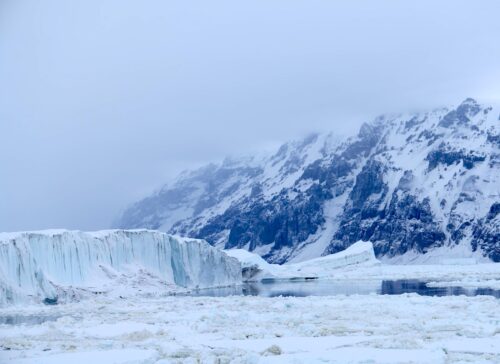
El Niño events have occurred for the past 500 years (1525-2016) based on reliable historical documents from seafaring vessels and modern-day climate data. By incorporating geological data from rock layers into this database, it’s clear that the recent El Niño was particularly strong.
But contrary to alarmist claims, they are more akin to deep ocean forest fires, helping revive coral reef habitats, fish populations, and ecosystems to thrive.
During this very long time period, the strongest El Niños have acted to alter Earth’s entire climate, redirect marine and land animal migration patterns, influence ocean phytoplankton blooms, dramatically change the configuration of huge coral reef complexes, and end entire human civilizations (Anasazi Indians).
Importantly, all scientists—including those who favor the theory of global warming—agree that El Niños are generated by natural forces, and not atmospheric warming from excess man-made carbon dioxide (CO2).
Knowing this, it is difficult to understand why many consensus climate scientists and mainstream media are characterizing the recent 2015-2016 El Niño as “catastrophic, unnatural, and irreversible.“
This characterization is incorrect, and some would say, intentionally misleading. Certainly, the recent El Niño was strong; however, it is more correctly characterized as normal, natural, and rejuvenating. Details supporting this are shown below.
First, let’s begin by discussing Geologist Charles Darwin’s theory of “Natural Selection“ as first proposed in his famous 1959 book “On the Origin of Species.”
Darwin formulated the theory of natural selection based on geological, botanical, and wildlife observations he made while visiting the Galapagos Islands, a group of isolated, volcanically generated islands that sit on an active major fault zone. This fault zone taps into hot magma chambers located deep beneath the Galapagos volcanic platform.
Massive pulses of geologically induced heat and fluid flow from the deep magma chambers are frequently on display in this region when one of the island’s many volcanoes erupts, sending chemically laden hot ash into the atmosphere.
These volcanic eruptions have a strong effect on the land, atmospheric, and marine environments of the Galapagos area. Darwin deduced that only certain plants and animals, which possessed the needed physical attributes, would survive these strong environmental changes.
In essence, he recognized that nature selected these specific species, aka “Natural Selection.”
What Darwin did not and could not know was that other very powerful geological forces located in deep-sea recesses along the Galapagos Island fault were, and still are, having a very dramatic effect on the region’s marine ecosystem.
In 1977, one of the most famous discoveries in the history of science was made in the deep ocean (7,500 feet) regions surrounding the Galapagos Islands and along the active fault system, Chemosynthetic Communities.
These deep-sea marine animal communities thrive in this pitch-black environment by feeding on chemicals and compounds present in the super-heated (750 degrees Fahrenheit) seawater that flows from deep ocean mini-volcanoes (Figure 2).

This is a very harsh and ever-changing environment where death, life, and rejuvenation are common. Recent research shows that the flow of superheated and chemically charged seawater from hydrothermal vents turns off or diminishes regularly, forcing the chemosynthetic marine animals to move in search of a new food source or perish. Deep-sea images of these areas indicate that large portions of these marine communities do, in fact, die, essentially death by a “cool blob.”
The death of these chemosynthetic communities is not “catastrophic, unnatural, and irreversible.“ To the contrary, this is part of Mother Nature’s cleaning and rejuvenation process…our interference is not invited.
Geologically induced superheated and chemically charged fluid flow on a much larger scale from deep ocean faults is what generates all El Niños (see here).
Like the Galapagos Island example, this geologically induced El Niño fluid flow and resulting changes in the Pacific Ocean can have a dramatic effect on marine ecosystems by killing portions of Earth’s reefs, inhibiting supposedly normal plankton blooms, and damaging selective fish populations.
These El Niño-induced changes, especially those that are wide-ranging like the 2015-2016 version, may appear horrible and unnatural to well-intentioned humans, but they are normal.
Let’s look at this “don’t interfere with Mother Nature’s work” concept in another way by reviewing a modern-era, land-based example. It will show how well-intentioned, but misguided, human interference has been:
The U.S. Forest Service’s “Forest Fire Suppression Policy” reigned supreme from the early 1900s until 1995. During this time period, forest fires were considered extremely dangerous and harmful to both the public and the forests.
These monstrous walls of destruction raged through our beautiful forests, killing animals and plants, destroying homes, and leaving in their wake complete devastation. How could any rational person possibly see the benefit of these horrific and unnatural events?
Consensus forestry experts agreed and actively interfered by aggressively attempting to halt all forest fires. After all this suppression policy was backed by “modern” research, and therefore, no room for debate!
Today’s forest management policies are quite different. Forestry experts and some in the public now understand that forest fires are necessary agents of the natural selection process. Native Americans were carrying out this task long before we arrived, as they understood the value of forest fires.
Fires act to clean out overpopulation, promote biological diversity, provide varied food sources for animals, replenish soil nutrients, and dispose of aging trees, just to name a few.
Our poor understanding of strong El Niños has sparked the same type of reaction from many present-day consensus climate experts and mainstream media, claiming that the effects of 2015-2016 El Niño are “catastrophic, unnatural, and irreversible.“
They say these monstrous walls of hot ocean seawater are raging through our beautiful oceans and along the way are killing coral reefs, dramatically altering our climate, and leaving in their wake environmental catastrophe. It is therefore necessary to develop an El Niño suppression policy, one that limits blaming global warming caused by man-made CO2 into our atmosphere.
As natural geological forces generate all El Niños and not man-made global warming, understanding this is the first problem with this call to action. El Niños are deep ocean forest fires, and Earth’s coral reefs, fish populations, and ecosystems will naturally rebalance themselves as the recent El Niño continues to subside.
Turns out Mother Nature actually knows what she is doing. Again. It’s time to take a lesson from previous playbooks and understand that nature always balances out, and does it best without our help.
REFERENCES
http://www.bbc.com/news/science-environment-32704506
http://coral.aims.gov.au/info/bleaching-environment.jsp
http://www.vox.com/2016/3/30/11332636/great-barrier-reef-coral-bleaching
http://www.gizmag.com/el-nino-phytoplankton-fishing/42665/
http://hubpages.com/education/Hydrothermal-Vent-Basics
James Edward Kamis is a Geologist and AAPG member of 40+ years with a B.S. and M.S. in geology who has always been fascinated by the connection between Geology and Climate. More than 10 years of research/observation have convinced him that the Earth’s heat flow engine, which drives the outer crustal plates, is also an important driver of the Earth’s climate.


















